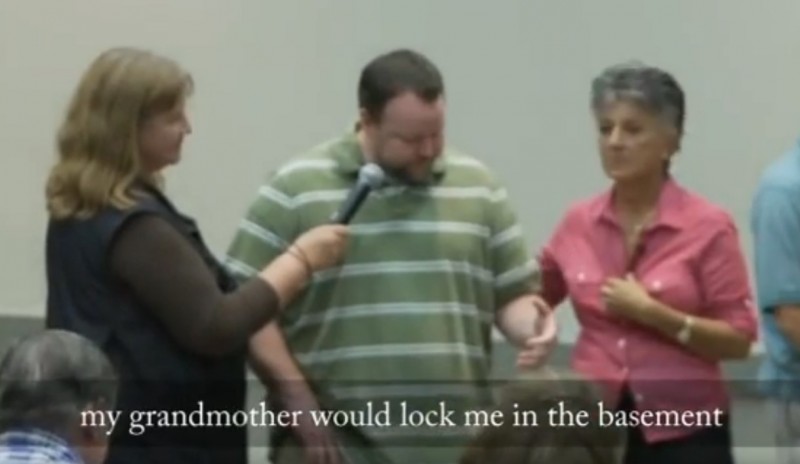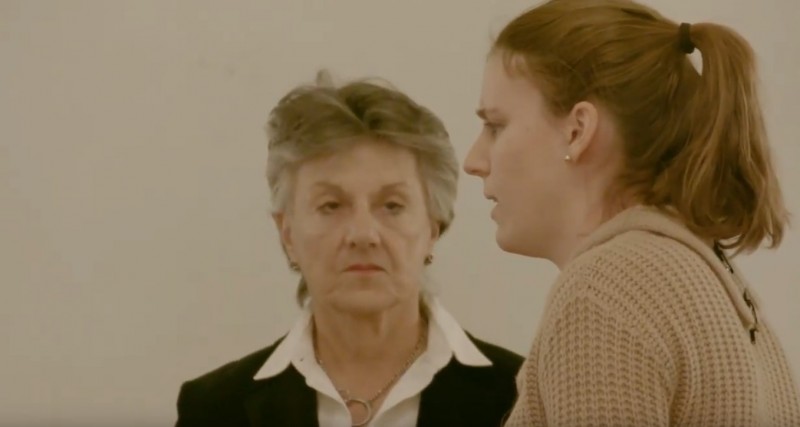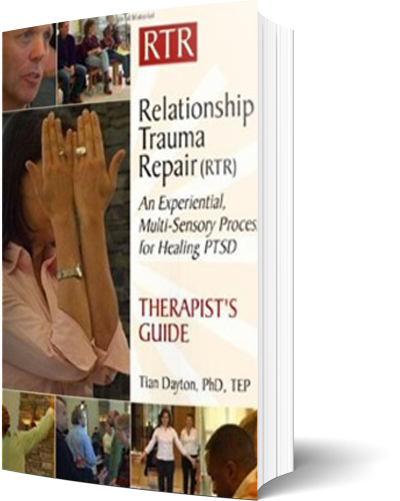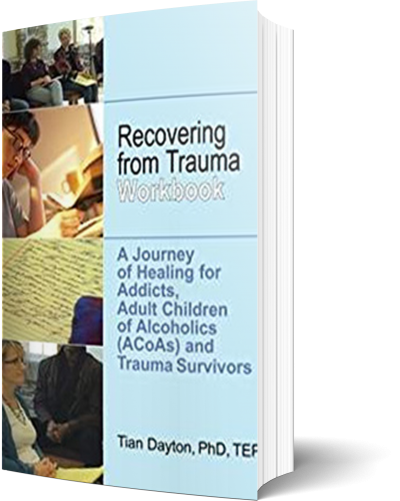What are Socio-Metrics?TM
Psycho-educational Experiential Processes
Tian Dayton PhD TEP
Socio-Metrics are discrete experiential processes that are psycho-educational, they both teach and heal. They are suitable for incorporating into existing residential or outpatient treatment programming or any group or, in some cases, one to one setting. They can be made relevant to a variety of treatment settings by adjusting “criterion questions” for different populations.
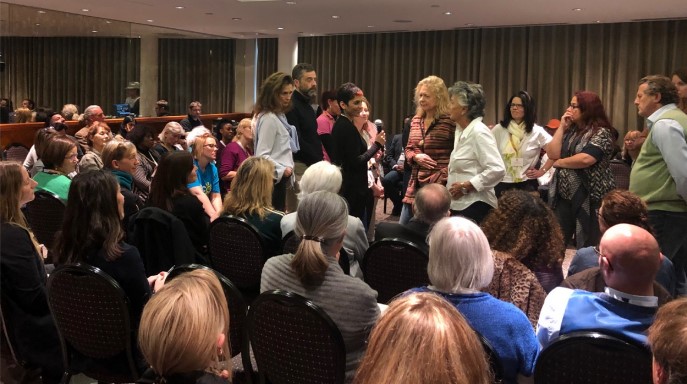
Socio-metrics bond and engage groups, they teach as well as heal.
Socio-Metrics are experiential process based on the principles of psychodrama and sociometry. Rather than one-off exercises with a scripted end goal, they are fluid and allow for maximum personal and member to member engagement. They are self-directed, that is the group member is continually empowered to make choices that particularly suit them, the therapist plays a role of keeping the room safe and the process moving but they are not the one choosing for the client, the client themselves is making many incremental choices which evolve through the design of the process. Socio Metrics engage and bond groups. They teach research concepts (see Trauma Symptom Floor Check below) as they offer experiential healing. The most popular and widely used of my socio metrics are “floor checks” and “the trauma timeline”. I developed Socio Metrics slowly over the past two decades in order to create experiential process that are psycho-educational and easy to train therapists to do. I was responding to the constant request I was getting to make psychodrama and sociometry more user friendly and appropriate for and keyed in to the field of addiction, trauma and recovery.
I have based the sociometrics on JL Moreno’s theoretical principles of sociometry and psychodrama but I have varied them in two distinct ways.
First I have made them psycho-educational by integrating research findings into the process.
Second I have expanded the choice possibilities by creating Floor Checks.
The locogram, which is one of Moreno’s sociometric processes, limits choice possibilities to four or five possible choices and it uses criteria that are applicable to the moment. I have created a process that allows for up to twenty- four or so possible choices and I have integrated research so that floor checks become a way of teaching the many important theoretical and research points that people in recovery need to learn. I have also increased the amount of possible choices to be on average around fifteen to twenty. The magic of this is that the combinations of sharing in sociometrically aligned diads and clusters is quadrupled at least. Sociometric alignment means that essentially people are aligned according to preference. They are free to choose the feeling, symptom or issue that they identify with by moving towards it and they find themselves standing with others who are making the same choice. They then share about why they made that choice, how in other words it relates to them and they listen as others do the same. Then they move on to a new choice, a new cluster of people. Additionally, the process of moving from choice to choice in Socio Metrics can be sustained much longer than with a locogram, offering more opportunities for making micro-connections both inter-personally and intra-psychically. They learn about themselves while in connection with others and the educational information that is part of many programs is delivered at the same time in a much more lively, personalized and descriptive manner. This moves learning from the dry chalkboard the alive and interactive center of the room. As participants move through this process of choosing and re-choosing a few things happen.
- They are grouped and regrouped according to the choices they make
- They come in touch with their own emotional process, they see and sense themselves in action.
- They learn about the symptoms that are related to say, PTSD, Anxiety, Depression, Anger, Well Being, Recovery, Relapse, Resilience etc.
- They develop skills of emotional regulation as feelings get warmed up inside of them, elevated to consciousness through words, shared and brought towards understanding.
- They develop skills of emotional literacy as they translated their inner experience into language.
- They learn to listen to emotionally laden sharing without acting out.
- They take ownership of their own therapeutic process.
“Experiential therapy” may involve pre-scripting and can have a goal or an agenda set in advance or even set before the work begins. Placing a protagonist or participant into a situation that is set up without them, fitting them in other words into our idea of what they need to look at, can add too much unwelcome force to the drama or the experiential process. It can be codependency making as it asks them to conform to the therapist’s idea of what should happen rather than keeping the locus of control within them. Choice-making is fundamentally resilience building, allowing the protagonist to drive the action and make choices as to where they identify rather than being told where they should identify helps them to build self-confidence and autonomy, it also builds a feeling of safety and trust. Embodied, whole person learning is core to the power and efficacy of psychodrama and sociometry. Physical movement is what engages the emotional system and stimulates feeling. One only has to think of walking and talking with a friend or the clarity of mind experienced by joggers or runners to see how easily we have access to our emotions while in motion. Keeping a group moving through a process of choosing, sharing, listening and choosing again, makes use of this mind-body system of movement and expression.
As my work has been primarily in the mental health and addictions field the criterion I use for choice-making leans in that direction, however these processes can be adapted for any type of group exploration. I have been developing these processes for two decades in response to continual requests on the part of clinicians around the country to have something they could do with their clients safely; they felt insufficiently trained to do psychodrama but recognized the value of experiential work. Today training in psychodrama is much more available and the method is being used in many if not most treatment centers. But twenty years ago, the demand exceeded the supply in many areas of the United States. Below is an example of “The Feeling Floor Check” which is the first floor check I created. The Symptom Floor Check can after that and follows the same process as all floor checks but writes symptoms on papers, not feelings.
Floor Checks
Experiential Processes that Teach and Heal
Description: The Trauma Symptom Floor Check is self-diagnostic which does a few things. It gives the client the freedom to move towards those symptoms that they are becoming aware of in themselves thus reducing the resistance that can come when the therapist “tells” the client what is wrong with them. It engages the client in their own healing process, they become curious about the workings of their own inner world and begin a process of self-discovery. Floor Checks also help to educate clients about the pathological characteristics that are a part of the PTSD syndrome so that they can develop a language through which to understand and work with them. The idea here is to “normalize” symptoms by making them conscious, translating them into words and sharing them with others and to bring them out into the open, hear others share and accept identification and support. You will find that the clients begin to learn from eachother as mini case studies on how a symptom comes to life for individuals are shared one after the other. This process helps to breakdown isolation and make feeling intense, split off, or repressed emotions less threatening. What we don’t know can hurt us. While these symptoms remain unconscious they can exert significant power over the lives and relationships of clients. The process of identifying them and putting them into words begins a process of understanding them, of being vulnerable with others which has the paradoxical effect of enhancing personal strength and building trust and connection.
Symptom Floor CheckTM
Learning About and Processing Symptoms of Relational Trauma and PTSD
Goals:
- To educate clients as to the range of symptoms that can accompany relational trauma
- To provide a format through which clients can decide for themselves which symptoms they feel they identify as experiencing in their own lives and relationships.
- To create opportunities to hear about how symptoms manifest for other people and in other people’s lives and relationships.
- To encourage connection, sharing, and support around facing difficult personal issues, to reduce shame and create comfort with vulnerability.
- To educate clients as to how to trade a pathological symptom for a healthy trait.
- To build resilience, spontaneity and strength.
Steps:
- On large pieces of paper write these symptoms or characteristics of relationship trauma:
- Problems with Self-Regulation
- Hyper-reactivity/Easily Triggered
- Learned Helplessness/Collapse
- Emotional Constriction
- Relationship Issues
- Somatic Disturbances: Body Aches and Pains
- Cultivation of a False Self
- Hyper-vigilance
- Over reactions/hyperreactivity/easily triggered
- Learning Issues
- Loss of Trust and Faith: In Relationships and an Orderly World
- Hyper-vigilance/Anxiety: Waiting for the Other Shoe to Drop
- Traumatic Bonding
- Unresolved Grief
- Depression with Feelings of Despair
- Distorted Reasoning
- Loss of Ability to Take in Caring and Support from Others
- Tendency to Isolate or Withdraw
- Cycles of Reenactment: Repeating Painful Relationship Patterns
- High-Risk Behaviors: Speeding, Sex, Spending/Debting, Working
- Survival Guilt: Shame
- Development of Rigid Psychological Defenses: Denial, Dissociation, Splitting, Minimization, Intellectualization
- Desire to Self-Medicate with Drugs, Alcohol, Food, Sex, Money, Work
- Other
- Place the papers with symptoms on them a couple of feet apart scattered around the floor.
- Ask participants to “stand on or near” a characteristic that they identify as being a problem for them in their lives.
- Once group members are standing on the characteristic that they identify with, invite them to share a sentence or
two about why they are standing where they are standing. - Next invite group members to stand on or near a trait or symptom that they feel was present either in someone in
their family of origin or in their family of origin as a whole that created problems. - Once group members are standing on the characteristic that they identify with, invite them to share a sentence or two about why they are standing where they are standing. A resilience-building question might be, “Which characteristic do you feel used to be a problem for you but you have worked your way through?”
- After group members have shared about one, two, or three characteristics say, “Walk over to someone who shared something that you identified with or that moved you, place a hand on their shoulder and share with them what moved you.” (Note: the sharing will be taking place in diads and subgroups that will naturally and spontaneously form as a result of this question.)
- At this point the group may be ready to 1) sit down and share about the experience so far 2) do “Letting the Child Speak” under Symptom Locogram in The Personal Journal or 3) move into psychodramas of “letting the child speak” by talking “to” the child self (in an empty chair or a role-player representing the child self) while in the throws of one of these characteristics, reversing roles and talking “as” the child and doubling “for” the child.
Variations:
Group members can share so that the entire group can hear them or, if the group is large, they can share with those who are standing on the same characteristic that they chose. When they share “around their characteristic or symptom” they will be sociometrically aligned by symptom, i.e., all those experiencing a particular symptom will be sharing with others experiencing that symptom. This subgrouping can make sharing feel safer and can allow clients to feel seen, supported, and more open. The symptom choosing can go on as long as it is useful, depending on the needs of the group. Generally, the group is saturated by the third choice and needs to move into sharing, journaling, or psychodrama.
The therapist may vary questions, e.g. “which symptom do you have the toughest time dealing with in other people?” or “which symptom seemed to be the most present in your family or origin?” or “which symptom do you feel you recreate the most on your present day life?” A resilience building question might be, “walk over to some- one from whom you feel you could learn something and ask them for help.” And/or invite group members to “upgrade” their symptoms, to trade in one for a trait they would like their symptom to morph into such as: E.g. “I would like to trade learned helplessness for a chosen position of surrender, or hypervigilance for awareness, or a loss of trust and faith with renewed faith in Higher Power and so on.” As they do this, let them write their new “upgrade” on a sheet of paper and place it next to or on top of the symptom. Allow them to do this for any symptoms with which they identify.
During sharing you may invite clients to share what qualities they feel they developed through adversity or what the silver linings are for them in having gone through a particular circumstance.
Journaling
Letting the Child Speak. Mentally reverse roles with yourself while in the throws of any one of the trauma characteristics and journal from that place. For example, “I feel helpless . . . I get this way whenever . . .” and so on or “I am feeling so emotionally constricted I just want to . . .”
A Moment of Repair. Journal about a time when repair occurred; write about how you felt during or after a moment of repair (apology, reconnection, repair of some sort) within the relationship and what positive lessons you learned about relationship repair from it that you might still be living.
Floor Check on Paper: If you use Working with Trauma Workbook in conjunction with Socio Metrics or for one-to-one therapy, I have adapted floor checks as paper and pencil activities.
Trauma Time LineTM
Providing Context and Narrative
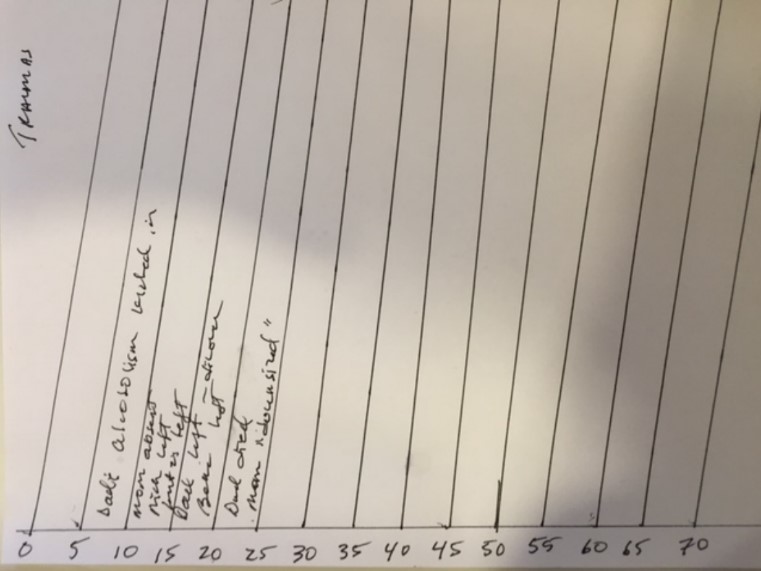
The Trauma Timeline allows a new narrative to be created spontaneously and through experiencing feelings directly, sharing them and seeing them through a less traumatized lens. We don’t tell a new story, we live a new story. One of the issues that developed as I was treating trauma experientially, particularly the kind of cumulative trauma that occurs over time, was that events were foggy in the memory of clients and tended to float around the psyche without a context. There was often little “where and when”, some memories were highly specific while oth- ers were indistinct, vague, confused and fragmented. Relational trauma often has an ongoing flavor to it as it is laced into relational dynamics that wax and wane over time. This makes it difficult to have a sense of a beginning, middle or end point, thus clients may carry a feeling of having suffered year after year without breaks.
The Trauma Time Line allows clients to get a basic sense of how trauma may have clustered in their lives and which parts of their lives may have been relatively free of trauma. The Trauma Time Line can also reveal how early trauma patterns may have continued to be recreated throughout client’s lives. Trauma that occurs early in a child’s life may impact later development.
The Trauma Time Line helps clients to place experiences that they may have pushed out of consciousness into the overall framework of their lives. It can also help them to see a clear before and after. Some clients have no memories before trauma took over their lives. This can happen either because they were born into a family that was trauma engendering from the very beginning or because the frozenness that they carry from the onset of trauma makes it difficult to think or remember anything before. Because their thinking mind froze during times of high stress relational moments, they may have thrown the pain they were feeling at that time, out of consciousness. But when we throw pain out of consciousness, we’re attempting to throw the experiences that surround it out of consciousness as well. Because relational trauma is often times characterized by alternating patterns of emotional extremes, both closeness and disconnection can come to feel threatening or uncomfortable. Again this lack of a sense of “normal”; rather than living in 4, 5 & 6, we find ourselves shooting between the extremes of 1-10 with no speed bumps in between. As a result of living on an emotional roller coaster, clients can become trapped in repeating dysfunctional relational patterns. They may swing from hyper vigilance to emotional numbness and withdrawal and/or over and under close. Cumulative trauma and dysfunctional relational patterns can be difficult to bring to a conscious level. When we do ask clients to describe them, we may be met with anything from a blank stare to bits and pieces of recollection that do not have any clear story line. Clients can feel strained and even artificially called upon to produce a set of descriptions that they cannot, in spite of their best efforts recall, they feel caught in the classic nightmare of the actor who has suddenly found himself standing on stage, curtains drawn and forgotten his lines. The danger for the client at this moment, is that they may try to come up with a story to, in a sense, stop the pain of not remembering, to “put something to rest” or worse to please a therapist who is feeling that their job is to provide a narrative of events. Time can lack a clear through line, cumulative trauma can feel like it has no beginning, middle or end. Providing a premature or simplistic narrative can be reductionist and can either focus on the negative, leaving out the more positive and nurturing side of the relationship or the opposite, can insist on a false positive that does not integrate anything threatening. Neither extreme is desirable, relation- ships, even the best ones are complex, love is intense and ruptures are deeply disturbing. It is learning how to work through distress, not the fact of it that allows some relationships to thrive whilst others get stuck. The more self-awareness we can develop, the better our chances of conscious relating. The more empathy we develop, the better our chances of living comfortably with others.
I have found that it is more authentic and useful to a client when I provide a series of experiential approaches, such as those in RTR, that allow these fragments of sense memory and flashes of emotion to emerge bit by bit and, in a sense, be the story. When enough of these shards of self emerge over time, consciousness eventually dawns. By feeling what went unfelt, we regain a sense of aliveness, by thinking what went un-thought, we regain a sense of personal connection, by articulating and sharing what went unsaid, we regain a sense of empowerment, agency and connectedness. We return to ourselves, and our self returns to us. We figure out how to connect to others in ways that do not ask us to hide our natural selves beneath false self-functioning. But this does not happen in one sitting, one week or one month. It’s a journey, it happens over time.
Laying events out on a time line can help a client to connect with the self they were before their lives took a painful turn. Connecting with a previous, more trusting and light hearted self can be an important part of healing and can bring up a lot of feelings ranging from sadness at years lost, to awakening an innocence and sense of goodness within.
Clients may become aware of periods in their lives that were relatively free of trauma and surprised that painful circumstances occurred during certain periods and not others. They may get in touch with ways in which they coped effectively with trauma that strengthened them, gave them hope and developed personal ingenuity and dynamism. As they lay their trauma history on a timeline their ways of coping may emerge as well and they may have a sense of some of their strengths that they developed through adversity in addition to coping strategies that got them into trouble. They may recall people and circumstances such as faith-based communities, schools, teachers, friends, neighbors or extracurricular interests that acted as buffers against pain. All of this is good material for sharing and discussion and can be indicated on the timeline as well.
Some client’s timelines may begin before they were born, a child of holocaust survivors, for example, may carry a powerful family history that feels bigger than their present family. They may need to walk backwards into time to gain the information they’re looking for or extend their timelines backwards on the paper. Others may carry a sense of overpowering expectations either positive or negative that burden their experience of today. Perhaps they have parents who loom large either because of their super successes and/or their large failures and that legacy feels all-consuming. They may need to walk forward into time or extend their timelines into the future on their papers.
As clients make split off affect conscious and articulate and share pain and/or feeling/memories that may have been previously inaccessible they are able to attach words to their experience and elevate unconscious experience to a conscious level. This is not the end but the beginning of treatment, the beginning of living and processing emotion differently. Trauma will not be resolved overnight nor once and for all, rather through this process clients will learn the skills of translating powerful, unconscious feelings into words, to talk about feelings without imploding, exploding or self-medicating. Painful memories will continue to come forward for a long time and new life challenges will arise. The idea is to learn to process emotions consciously rather than repress or split off pain. In this way the same life can be experienced differently, situations that once might have blown up creating more trauma can be handled in such a way as to engender learning, personal growth and strengthen resolve and resilience instead.
I developed The Trauma Time Line late in the 1980’s and first published it in The Living Stage 1994. It has moved through many permutations over time. The reason I have used it as The Trauma Time Line with only trauma’s listed is because, after many years of testing on various populations, this approach revealed the most consistent results. The two spontaneous awareness’s most stated by clients have been , “I didn’t realize that trauma’s were in this part of my life only, or in this part but not the other part sort of thing,” and “I see how I have been living out these trauma related dynamics and recreating them throughout my life”. A third has been to be able to reconnect with a more carefree self, often times a childhood self.
The Living Stage has more than 100 Socio-Metrics and can be a resource for clinicians, additionally, the first one hundred pages describes the basic theory of Psychodrama and Sociometry.
Goals:
- To provide a visual context through which to identify the developmental progression of trauma.
- To see where traumas may have clustered in life or where there was little to no trauma.
- To allow clients and therapists to identify where development may have been arrested or gone off
track. - To identify points of strength and resilience.
- To bring to consciousness how trauma breeds trauma, connecting related traumas so that one can see
the full impact, not just of one traumatic event, but of a string of related traumas. - To put life experience back into a context and place traumatic experience into real rather than imagined
time. - To identify and observe how reenactment dynamics got set up and lived out over time.
Steps:
- Ask participants to go to The Trauma Time Line exercise in their Emotional Sobriety Workbook or Personal Journal or on a piece of paper draw a line the length or the longest side of the paper and divide the line into five year intervals.
- Ask group members to recall events, situations or behaviors from their families that have felt traumatic to them, that hurt, frightened them very much or caused them to shut down.
- Have them locate these events on their appropriate place along the timeline.
- Share the timelines and invite clients to make observations as to what they see in their own timelines. This sharing can be done in the large group, clusters or diads, one person at a time, holding the timeline up and sharing it. (see tiandayton.com, streaming video of RTR The Trauma Time Line).
- Next lay out large note cards along the floor in a time line progression at five year intervals to match the Trauma Time Line.
- Invite group members to go to a place along the time line on the floor where they feel they have unresolved issues or feel stuck. (Note: they can just choose that place that they are presently most “aware” of and feeling the most intensely as there may well be several). This will naturally align and allow people who are emotionally tender around the same developmental stage, to stand near each other.
- Invite them share with those nearest to them on The Trauma Time Line, thus allowing them to 1) begin to talk “from that age and emotional and psychological space in time”, 2) give that part of themselves a voice and3) receive identification, understanding and support from those in a similar place. Note: This will help to break the pain of isolation and is itself a full exercise. If you use it as a full exercise, make sure to allow plenty of time for group sharing about what came up during that process. You can do this for more than one stage though more than two will likely be overwhelming and one can feel very sufficient. And it can be done more than once during treatment.
- After time line work is finished, either go back to seats and share about the entire process to create closure or proceed with one or both of the following two options 1) Journaling 2) Psychodrama.
- Set up two chairs facing each other, one representing the client at the age on their timeline that they wish to embody and talk to, the other their adult self.
- Invite the client to talk from the age on their timeline that they wish to embody to their adult self in the other chair.
- When they are finished talking, invite them to “reverse roles”, sit in the “adult self” chair and respond to the “younger self” or, if you know how to do role plays, reverse roles continually and have a dialogue between the child self and the adult self. The idea here is to develop this link from the child to the adult self so that in future, when the child self is feeling strong feelings, they will look to the adult self to help manage and regulate those feelings through holding, insight and understanding rather than have the child self move straight into talking and action from a frustrated, “young” and immature place without mature reflection and understanding. Here we’re developing new, more mature ego functions.
- We need to train clients to get their child self to talk to their adult self first, before blurting all their childhood wounds at the world and expecting the world to heal them. Strengthening the inner dialogue between the thinking, rational adult and the child mind, is critical so that the adult mind can help the child mind to right size emotions. Remember the prefrontal cortex shuts down when we’re feeling threatened and the feeling/sensing/limbic mind takes over. In the case of childhood trauma in the home, when the adults were causing the stress, that means that often times childhood pain may never have been talked through and right sized. Rather it lives flash frozen, word- less and unexamined within the mind body and gets triggered in this state. We become all feeling with no thinking. Part of healing trauma, a big part, is simply making this wordless pain conscious and translating it into language so that we can use our thinking mind to understand it. Our mature, adult mind can make new sense out of unprocessed, childhood experience. This can also be done standing up without chairs if the therapist is comfort- able with small psychodramas.
- “Dialoguing” is designed to teach clients to (1) learn the difference between a “child” or “adolescent” state of mind and an “adult” state of mind, (2) teach the child self to translate his/her powerful emotions into words and talk about them rather than simply act them out, and (3) develop the habit of listening to the feelings your child self is trying to articulate and place them within an adult framework before blurting them out in their “triggered” or “un-thought-through” state.
Variation
WHEN DID I START SELF MEDICATING?
After walking the time line in group, write down, next to the appropriate age, when you first made the discovery that self-medication of some kind worked to reduce pain and anxiety. Then write down what form of self-medication you choose and what was going on at that time in your life. This may begin with one form of self-medication and evolve into several others.
Risk/Benefit Ratio of Socio-Metrics: For the Research Minded
I have developed RTR precisely to reduce risk in doing experiential work. Psychodrama is too open-ended and dependent upon the skill level and the personality of the therapist to make it low risk. While it can be amazingly healing, it needs to be done with restraint, understanding and considerable training on the part of the therapist. RTR requires risk.
- It is open-ended in the sense that choice of any particular criterion is up to the client, however the therapist has little choice.
- The process is clearly laid out so that therapists primarily play the role of keeping the room safe and the process moving.
- The therapist role is not open-ended thus reducing iatrogenic risk considerably. Additionally the processes are all contained and relational so that risk is lessened and support among group members is increased.
- The fact that clients in a sense choose their way through the process also reduces iatrogenic risk as they are not being forced to accept a therapist’s version of what is going on with them but allowed the dignity to share their own.
- The comfort and relief of the insights help to enhance the benefits.
Although there is a natural discomfort in revisiting traumatic material that is a part of the healing process, the support and insight help in mitigating discomfort, anxiety and worry. Opening up and sharing is the direct opposite of numbing and withdrawing. While it can be embarrassing or uncomfortable is necessary in learning to take in caring and support from others the lack of which is a symptom of PTSD.
It is a contention of Moreno’s that in a group each person becomes a therapeutic agent of the other. Socio Metrics open up and structure countless opportunities for just this kind of healing to take place. There is safety in numbers, Moreno also said “by the group they were wounded, by the group they shall be healed.” Socio Metrics are a fully relational process of healing.
The FLOOR CHECKS are my strongest contribution to the field and my most original as while I have based them on sociometry, I have developed them far beyond that. I have added research-based criterion which is one of my innovations. The bodies of research I have drawn from are trauma, neuroscience, grief, forgiveness, positive psychology and attachment. Because of this innovation, Socio Metrics are psycho-educational, they simultaneously teach and heal.
I have increased the research-based number of possible choice variables while at the same time I’ve decreased the way in which those choices can be made. Take trauma symptoms for example, while the choosing of any particular research- based symptom is a personal choice, the way in which each symptom is chosen is highly controlled. Risk here is reduced both by the control of what choices are possible and the focused path of the chooser. The autonomy of the choice-maker or the client also reduces risk as clients can manage their level of participation to a significant extent. Additionally there are constant diads and clusters of participants being formed around each choice so as emotions become intense, participants are supported and given space to share “what comes up” or “what gets triggered”. Intense emotions become immediately regulated through insight and understanding and they become normalized through mutual identification. Because of the relative safety and at times even game-like quality of the process, the cards on the floor along with the sharing of those in the room, act almost like “safe triggers” of feelings and these feelings arise and can be brought to a conscious level through sharing. The thinking mind can come back on board and use reasoning, reframing and reflection to regulate emotions. This process done over and over again teaches the skills of emotional literacy and emotional regulation which then become portable. FLOOR CHECKS in my experience have the highest benefit ratio and lowest risk ratio of any of my Socio Metrics.
THE TRAUMA TIME LINE has a slightly higher risk ratio but still the benefits outweigh the risks significantly. The reason this is so is because THE TRAUMA TIME LINE, although evocative emotionally is also contained and provides significant insight and relief for those participating. THE TRAUMA TIME LINE helps to put traumatic periods in one’s life into the context of ones life. Due to the psychological shut down, dissociation and the numbing effect of trauma; trauma engendering events or relational dynamics tend to feel as if they have happened outside of normal time. The result of this is that one feels as if their entire life has been traumatizing when perhaps only a period of it was. Part of trauma resolution is to place events in their proper context in the overall framework of one’s life and to be able to separate the past from the present as well as to learn to identify reenactment dynamics, trauma transferences and dysfunctional relational patterns that are the result of trauma. All of these become apparent on the TRAUMA TIME LINE.
The TRAUMA TIME LINE can be done in a way as to titrate levels of risk.
Least risky: Do the Trauma Time Line as a paper and pencil process and share in small groups.
Slightly higher risk: Put numbers along the floor representing years in one’s life and invite the group to stand near a year where they feel they need to do some work and share with those near them who will also feel they need to do some work at a similar age.
More risk: Walk the time line one person at a time talking as one goes about traumas they experienced and making connections as to when self-medicating patterns may have set in along the way; making the connection between trauma and self-medicating/addiction. (see tiandayton.com/RTR/hour 1)
EXPERIENTIAL LETTER WRITING
Letter writing is a technique in that it’s role based, the protagonist writes a letter to another person or aspect of themselves but it doesn’t need to be turned into a role play or action. The letter is for therapeutic use only and never to be sent. Reading the letter to an empty chair or a role player can make it experiential. Writing and sharing is less risky. Making letter writing carries a bit more risk but is still more contained than a full role play.
Least risky: Clients can write a letter and read it out loud in a small group.
Slightly more risk: Clients can write a letter and read it to an empty chair representing the person or aspect of self that the letter is written to.
Most risk: Clients can write a letter and read it to an empty chair or a role player that they choose. They can add role reversal and possibly doubling.
The benefits of letter writing is that it gets a lot off of a person’s chest and brings significant consciousness around and emotional literacy as to what might be being held in silence or even secrecy. There is great flexibility, clients may write any type of letter, e.g. to their addiction, depression, body part, person or part of themselves. They can write a 9th step letter of amends to someone else or to themselves.
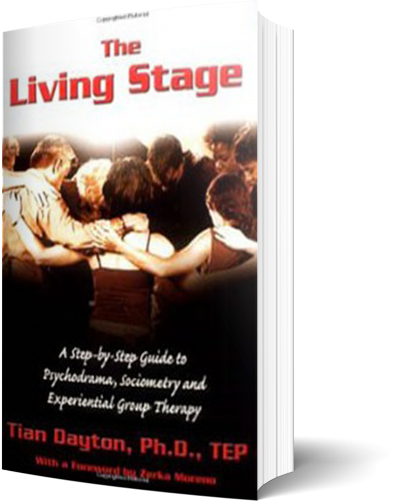 The Living Stage lays out the theoretical principals of psychodrama, sociometry and group psychotherapy.
The Living Stage lays out the theoretical principals of psychodrama, sociometry and group psychotherapy.
It has more than 100 socio metrics that can be used in groups.
It lays out workshops according to subject
Relational Trauma Repair: Socio Metrics
Permission to reprint is granted only when full APA crediting is used on the same page and on every page that is reprinted. Socio Metrics, trademarked processes, reprinted with the permission of Tian Dayton PhD TEP. Permission to use Socio Metrics in programming is granted when full credit is also given, Socio Metrics cannot be incorporated under other people models without proper recognition.
Feel free to copy and paste this sentence.

